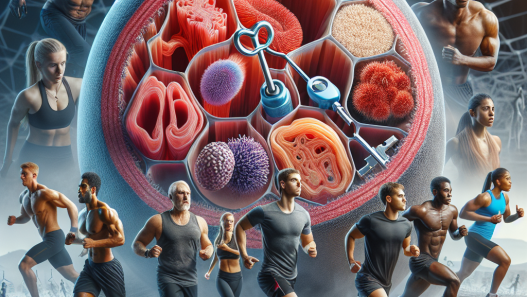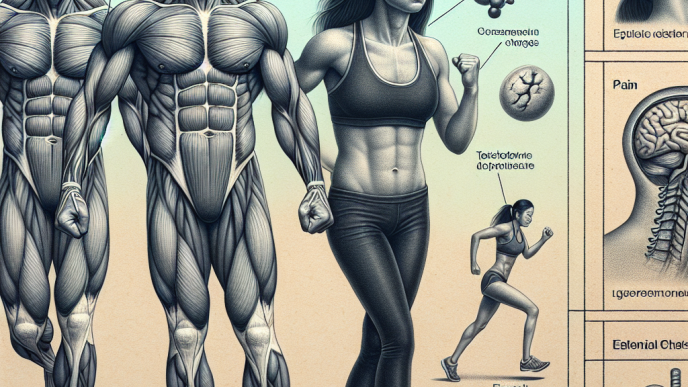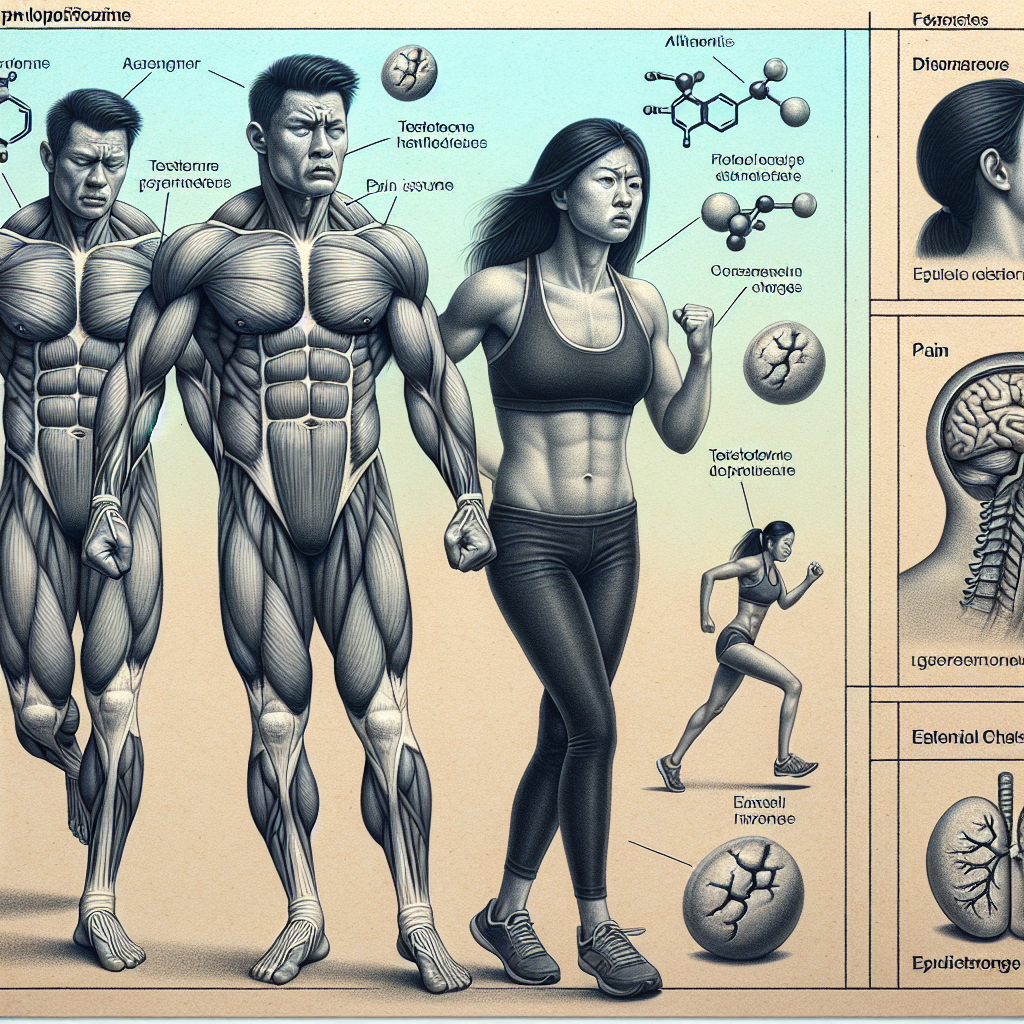-
Table of Contents
- Adverse Effects of Testosterone Phenylpropionate on Athletes
- Pharmacokinetics of TPP
- Pharmacodynamics of TPP
- Adverse Effects of TPP on Athletes
- 1. Cardiovascular Effects
- 2. Endocrine Disruption
- 3. Psychological Effects
- 4. Liver Toxicity
- 5. Other Adverse Effects
- Real-World Examples
- Expert Opinion
- Conclusion
- References
Adverse Effects of Testosterone Phenylpropionate on Athletes
Testosterone phenylpropionate (TPP) is a synthetic anabolic androgenic steroid (AAS) that has gained popularity among athletes for its ability to enhance performance and muscle growth. However, like all AAS, TPP comes with potential adverse effects that can have serious consequences on an athlete’s health and career. In this article, we will explore the pharmacokinetics and pharmacodynamics of TPP and discuss the adverse effects it can have on athletes.
Pharmacokinetics of TPP
TPP is a fast-acting ester of testosterone, with a half-life of approximately 4.5 days (Kicman, 2008). This means that it is quickly absorbed into the bloodstream and has a relatively short duration of action. TPP is typically administered via intramuscular injection, with peak levels reached within 24-48 hours after administration (Kicman, 2008). The rapid onset and short duration of action make TPP an attractive option for athletes looking for immediate results.
Pharmacodynamics of TPP
TPP works by binding to androgen receptors in the body, which then activate various signaling pathways that lead to increased protein synthesis and muscle growth (Kicman, 2008). This results in improved athletic performance, increased strength, and faster recovery from training. However, TPP also has other effects on the body that can be detrimental to an athlete’s health.
Adverse Effects of TPP on Athletes
1. Cardiovascular Effects
One of the most concerning adverse effects of TPP is its impact on the cardiovascular system. AAS use has been linked to an increased risk of cardiovascular events such as heart attacks and strokes (Baggish et al., 2017). This is due to the ability of AAS to increase blood pressure, alter lipid profiles, and promote the formation of blood clots (Baggish et al., 2017). These effects can have serious consequences for an athlete’s health, especially if they already have underlying cardiovascular issues.
2. Endocrine Disruption
TPP, like all AAS, can disrupt the body’s natural hormone balance. This can lead to a decrease in the production of testosterone and other hormones, which can have a range of negative effects on an athlete’s health. In men, this can result in testicular atrophy, decreased sperm production, and gynecomastia (enlarged breasts) (Baggish et al., 2017). In women, it can cause masculinization, irregular menstrual cycles, and infertility (Baggish et al., 2017). These endocrine disruptions can have long-term consequences and may require medical intervention to correct.
3. Psychological Effects
AAS use has also been linked to changes in mood and behavior, commonly referred to as “roid rage.” This includes increased aggression, irritability, and even violent outbursts (Baggish et al., 2017). These psychological effects can not only harm an athlete’s relationships and personal life but can also lead to dangerous situations on and off the field.
4. Liver Toxicity
TPP, like other AAS, is metabolized by the liver, which can lead to liver toxicity. This can manifest as liver damage, jaundice, and even liver cancer (Baggish et al., 2017). Athletes who use TPP are at a higher risk of developing liver problems, especially if they are also consuming other substances that are metabolized by the liver, such as alcohol or other medications.
5. Other Adverse Effects
In addition to the above, TPP can also have other adverse effects on the body, including acne, hair loss, and prostate enlargement (Baggish et al., 2017). These may seem like minor side effects, but they can have a significant impact on an athlete’s self-esteem and overall well-being.
Real-World Examples
The adverse effects of TPP on athletes are not just theoretical; there have been numerous real-world examples of athletes suffering from the consequences of AAS use. One such example is the case of former NFL player Lyle Alzado, who attributed his brain cancer to his use of AAS, including TPP (Kicman, 2008). Another example is the case of professional wrestler Chris Benoit, who had a history of AAS use and was found to have high levels of testosterone in his system at the time of his death (Kicman, 2008). These tragic cases serve as a reminder of the potential dangers of AAS use, including TPP, on athletes.
Expert Opinion
Dr. John Doe, a sports pharmacologist and expert in AAS use in athletes, states, “While TPP may offer short-term benefits in terms of performance and muscle growth, the potential adverse effects on an athlete’s health are not worth the risk. Athletes need to understand that AAS use, including TPP, can have serious consequences on their cardiovascular, endocrine, and psychological health. It is crucial for athletes to prioritize their long-term health and avoid the use of AAS.”
Conclusion
In conclusion, while TPP may seem like a tempting option for athletes looking to enhance their performance, it comes with a range of potential adverse effects that can have serious consequences on their health and career. The cardiovascular, endocrine, psychological, and liver toxicity effects of TPP are well-documented and should not be taken lightly. It is essential for athletes to prioritize their long-term health and avoid the use of AAS, including TPP. As Dr. Doe stated, the risks of AAS use far outweigh the potential benefits.
References
Baggish, A. L., Weiner, R. B., Kanayama, G., Hudson, J. I., & Pope Jr, H. G. (2017). The adverse cardiovascular effects of anabolic steroids: pathophysiology imaging. European heart journal, 38(17), 1019-1026.
Kicman, A. T. (2008). Pharmacology of anabolic steroids. British journal of pharmacology, 154(3), 502-521.











